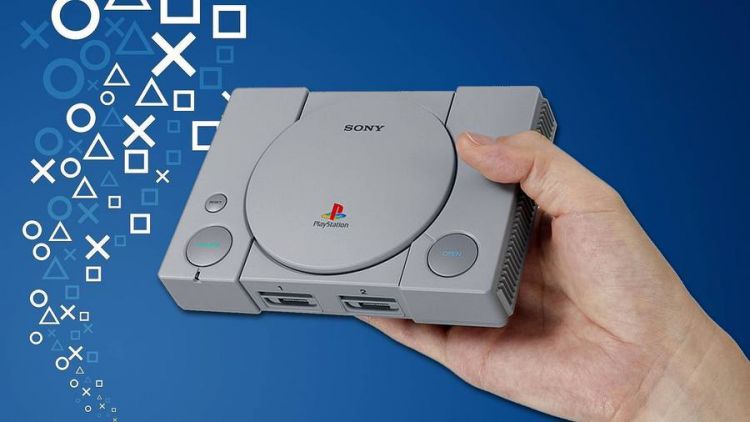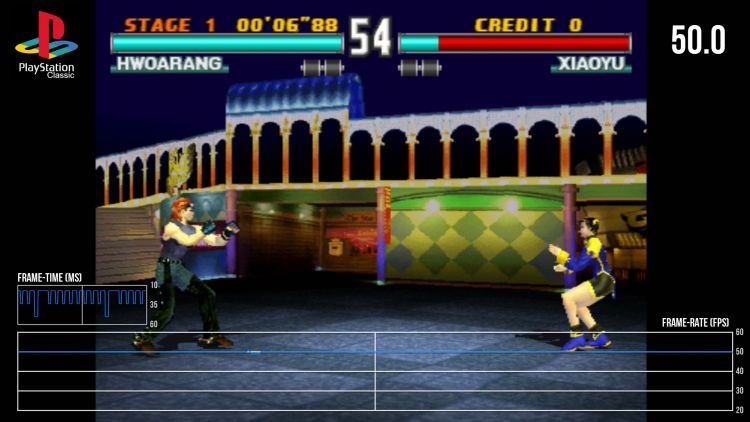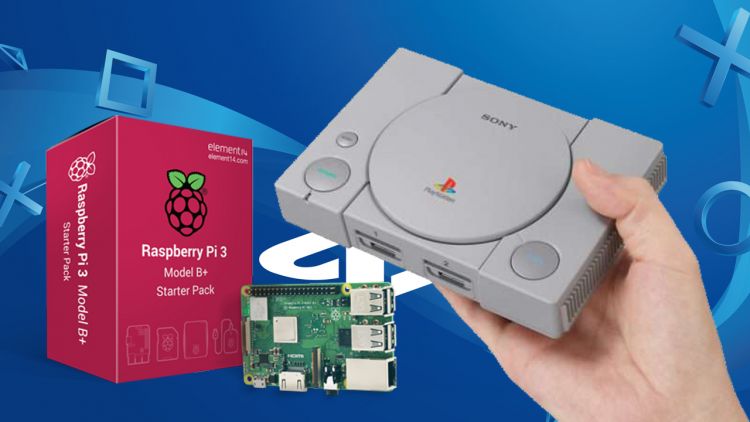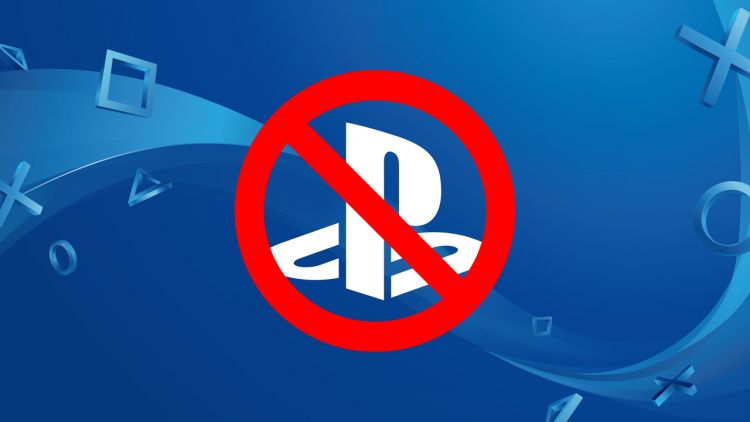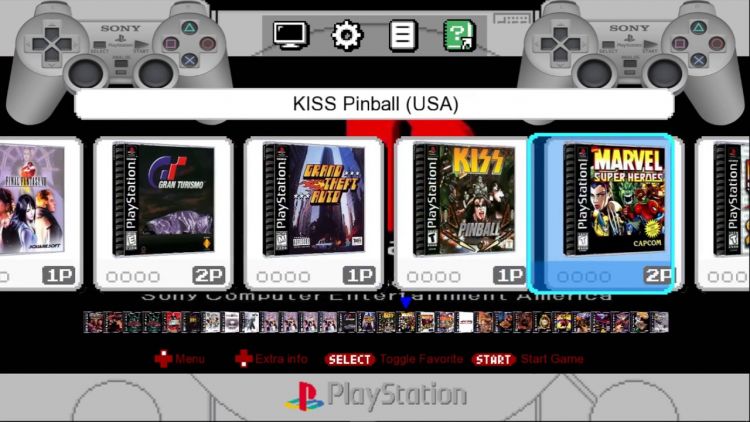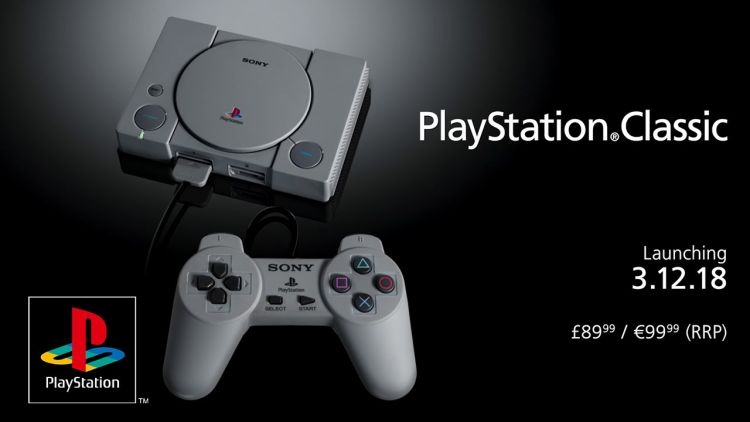Recently, my fellow staffer released an article called “PlayStation Classic: Yet Another Gaff From Sony” which painted a very limited and honestly, one-sided view of the recently released cash-in from Sony on the Classic Mini Console market. Yes, there are some issues with the console, the game selection, and even the emulation software that was used. However it doesn’t mean that people should be writing the console off completely. Through this Counterpoint article, I’m going to explore bits and pieces from the earlier article and other complaints people have generally had about the PlayStation Classic and address them, and even find some positives around the console too.
https://www.youtube.com/watch?v=kieGhJJRenI
Sony’s Motives
Ok, let’s get this out of the way right from the get-go. This is a cash in by Sony. The current nostalgia wave of mini retro consoles has been making companies huge amounts of money with consoles selling out for months or almost a year after release. For the general public, this is a great way for them to relive their youth, educate their kids on their parent’s youth, etc. For the collectors market, it’s a good little addition to the shelf alongside their more expensive original console, and for hackers, it’s a great new console to break open and exploit. So after seeing Nintendo making huge amounts of money with the NES and SNES mini consoles, it wouldn’t surprise anyone that eventually Sony would get on board with one of their best and most beloved consoles. Well, this is exactly what they have done. Sony releasing the PlayStation Classic is an easy way for the company to make more money off the back of its back catalogue without having to put any real effort in, just like Nintendo did. So to bash Sony for a cheap move like this is pointless since Sony is doing what any other business would do: Follow a popular trend and make money from it.
PlayStation 3 vs PlayStation Classic
The first thing many people like to bring up about the PlayStation Classic in a negative light is emulation. Yes, the PlayStation Classic is nothing more than a fancy shell of an Android system running the open source PCSX ReARMed emulator. Once again, how does this differ to Nintendo using a shelled custom chipset device that runs modified RetroArc software as it’s base? It doesn’t. However, there are other comparisons here that are often made using Sony’s own hardware; namely the PlayStation 3 and PSVita/PSP.
When it comes to Sony’s own internal emulation of their PSX games library, it’s not exactly perfect like everyone likes to claim. While the handheld PSVita and PSP versions are as close to original hardware emulation as can be, that’s mainly because on the back end of the consoles, they have the original PSX hardware available to use. Kinda hard to dismiss something that is running the same hardware and architecture as the original console to emulate the same thing. So as many others recommend, get a PSVita or PSP for PSX emulation as it is as close to the original console as can be… The PlayStation 3 on the other hand… Ugh. The PlayStation 3 had some fancy shaders that upscaled things to help with the 720p output of the games, but often that games ran like ass thanks to the anti-aliasing not working properly, if at all. Games like Tekken 3, the benchmark everyone seems to use, looked and played like ass on the PlayStation 3. Even Sony said that PSX emulation on the PS3 was an accident and would not work 100% with every game from the previous era. So using PlayStation 3 as a comparison is not a good idea.
But that’s the thing with emulation, it’s never going to be perfect. A lot of what made games work was not software, but hardware. You cannot emulate hardware no matter what programming you know. Hell, it’s taken decades for the ePSXe group to make their software into the powerhouse it is today, and even then it takes a fairly decent PC with a lot of extra modifications to the program in order to get those dated graphics to look somewhat decent on modern displays. Emulation can only do so much, but it cannot replace the original hardware. People seem to forget that when looking at the PlayStation Classic since they are expecting something that is just not technically possible without just remaking the original console hardware.
50Hz vs 60Hz: Does PAL really matter?
The next biggest gripe that people are making is the 50Hz vs 60Hz issue when it comes to some games, especially the headliner Tekken 3. Now the thing about this debate is that for Americans, I’ll repeat… FOR AMERICANS, this is a huge problem as they grew up with 60Hz TV systems that were able to output that signal to their TVs and to them, things ran better. For someone like myself who spent the majority of his time in Australia with 50Hz being the broadcast standard, the difference between the two signals was minimal. Hell, I thought 60Hz games were slightly faster, but at the cost of the picture looking stretched and washed out. To me, 50Hz brought a better-looking game that ran at a much smoother and consistent rate than it’s 60Hz counterpart. (Yes, I was one of those kids who was lucky enough to have a modded PSX console and a TV that could output both 50Hz & 60Hz)
So what is the problem here in 2018 when the broadcast standard WORLDWIDE is a minimum of 720p, why make such a fuss about this old problem? Well from what I understand from the Digital Foundry video breaking the console down, it stems from the 50Hz gameplay being dropped into the native 60Hz output of the console, which creates a bunch of problems such as slowdown and screen juddering. The PlayStation Classic does try to make this up by duplicating frames to get things to that output, but it doesn’t work well. Thankfully, that issue might be a moot point thanks to the recent discovery of a Secret Emulation Menu easily found on the console which allows you to set everything natively to the NTSC/60Hz output… But do so at your own risk.
Personally, I think this issue is overstated, especially since this seems to be mostly an AMERICAN issue. A lot of times Americans do not like thing that are not to their standards. So while 50Hz games are brighter, look better graphically, and run at a much consistent rate than their 60Hz cousins; this is all about ‘MURIKA DAMN IT! Give Americans THEIR standards and fuck the rest of the world which did things differently. 60Hz wasn’t the best thing ever back in the day as it was an inconsistent frame rate mess back in the day, and even worse when you try to emulate it. Sony did the right thing in having some of their more graphically intensive games brought in at the PAL/50Hz range for stability rather than ZOMG FRAMEZ!!
Hardware Complaints
To be honest, not many people are complaining about the hardware of the PlayStation Classic. Like most mini consoles these days it’s some modified version of the Raspberry Pi Android based system. However, this brings about the issue as to why didn’t they just use one of the more powerful Raspberry Pi3 bases and work with that? Well, the point comes down to cost vs creation. Sony went out of their way to make sure they didn’t do what Nintendo did and that was to create a system that was more powerful than it needed to be. This was done with the massive piracy issue with the NES/SNES Classic, which is able to somewhat play PlayStation games on that console thanks to it being way more powerful than it should be. As a business move, this was a good idea by Sony. This means that people aren’t going to be ripping the firmware open and have the console trying to run PlayStation 2, Dreamcast or Xbox games anytime soon. This is a PlayStation console and should, by all means, be at a minimum able to play the PlayStation library of games; which does no matter what people are saying. The games run, get over it.
Once again this all comes down to expectation being too high on the side of the end user, or at least the uptight media and influencers who wanted a PlayStation emulation machine that runs flawlessly on hardware that they want to use for other means. Given that this is a legal way to play their beloved classic games on their huge TVs that were never meant to be used with such low-end graphics, people are upset that we didn’t get some mythical machine that is going to upscale every PlayStation title into 1080p at 120fps. What Sony gave us is what Sony promised us: A console designed to be a lot smaller than the original and still be able to play the games from that era in a playable state.
Software Selection
And here we go… The software selection. But before we get into the game titles, I want to take a moment to talk about the User Interface for a moment. The PlayStation Classic UI does a damn good job at looking like the old school memory card/music player section of the original PlayStation, right down to the classic opening music when you power the console on. This to me is something that everyone overlooks because it’s something that is hard to bitch about. Sony did a wonderful job with this UI, and even adding in save states alongside a virtual memory card for each game is a great thing and I thank them for including that when they could have gone down the Nintendo route and said get stuffed.
Now for the games. Yes, we get 20 games… Why is this a problem? The SNES classic had 21 games, and the NES Classic had 30 games. Now take into consideration that the average NES rom file is about 100kb, and the SNES is about 1mb. So taking 20+ games and putting them on a very small 256mb flash device is easy to do. The average PSX game is upwards of 500mb, so having 20 games on a 16Gb flash device is pretty cool when you think about it. That’s not even mentioning the OS, emulator and other bits and pieces that help run the console too. So, in the end, we are very lucky to have 20 games, some of those with multiple discs involved, so we should be lucky to get the 20 games at all.
But that’s not the real problem, is it? Oh no, once again that nasty little demon called Expectation comes around to say hello. There are millions of “Top X PlayStation Games” lists out there on the internet and everyone seems to have their own opinion about what should and should not be included with a package like this. However, Sony decided to do what they could with what they had available. People seem to forget there are these things called licensing rights, and they can pertain to things like the video game itself, the branding of the game, the soundtrack used in the game, right down to the engine used to create the gameplay and graphics. These licenses are not infinite and do expire, and are also very damn expensive to get a second time if the media it was used it was successful. Take for example a game that a lot of people wanted on the list: Tony Hawks Pro Skater 2 (or 3 depending on the list). This game was owned by Neversoft and published by Activision; so we have a defunct developer who was merged into Infinity Ward with all rights moving over to Activision, who is now Activision-Blizzard. Activision-Blizzard is now a powerhouse company with their own game launcher and the ability to re-release their own games at will. They don’t need Sony’s licensing money at all. Not to mention that there are so many tracks on the game that would require a new contract to be written up for a re-release, and that comes at a HUGE cost to Sony & Activision-Blizzard; costs that won’t be returned unless the PlayStation Classic sells in the tens of millions. It’s just not good business.
What Sony did instead was use its current contracts with a lot of their favorite 3rd party developers to create a games list for this console on the cheap. You see, Sony has companies like Capcom, Namco Bandai, Square-Enix and others already under long contracts for games like Tekken, Final Fantasy, Resident Evil and more through their own online distribution system: The PlayStation Network. It would be easy to make concessions or excess money deals to these companies using existing contracts rather than make new ones for other games. Sure, there is something to be said about these contracts and how better choices could have been made for games like Twisted Metal 2, Resident Evil 2 and others. However, you then take into account things like sales figures and ease of use. While other games were “better” gameplay and graphics wise, you need to take into account the processing power of the system at hand and the emulation software that is running. Frankly, I do agree better choices should be made, but I understand the factors that work into these decisions.
Is The PlayStation Classic Really A Middle Finger To Fans?
One of the biggest complaints from the article that was recently released on this very site was that Sony produced this console during a time where people are screaming at Sony to bring backward comparability to the PlayStation 4 and not doing so is another in a long line of presumably “middle fingers” to the millions of people who own a PlayStation 4. Sure, the PlayStation 3 could emulate (badly) PlayStation 2 and PlayStation games, and the PlayStation 2 could emulate PlayStation games; so why can’t a powerful system like the PlayStation 4 emulate at minimum PlayStation games? Well, that comes down to the idea that we should forever be going back to the past in order to keep the future alive. Eventually, you need to stop catering to the people who want to stay in a specific era and live those days time and time again.
Hardware and Software wise, things evolve and change. Programming languages become easier yet more complex. The programming used back in the days of the PlayStation no longer work with modern hardware, which is why new hardware and software would be needed to keep those older games running, and that means more cost involved. Remember when the first run of PlayStation 3 units with the hardware to emulate PlayStation 2 games came out and how Sony was losing money hand over fist in production costs? I do. Sony did what it could to make things cheaper to produce by shifting focus from hardware emulation to software (which didn’t work, so it was removed). This helped Sony run the production of the PlayStation 3 at a profit and allowed the company to continue making consoles and eventually produce the PlayStation 4. The main point here is that hardware needed to make the emulation work on a console using custom firmware and software is expensive, so to do it would either drive a loss in profits or a rise in the cost of consoles; and with console prices being high enough as it is, I don’t think anyone else wants to pay more for the PlayStation that can run it all.
While Sony’s motto for the PlayStation brand is “For The Players” (Or at least it was. Recent commercial stating “This Could Be You” seems to take a more experienced approach than a user influence motto) might seem like they are going to make decisions that would benefit players, people seem to forget that Sony is a COMPANY and a COMPANY will always do what is best for business rather than what the consumer thinks it wants. That nasty demon Expectation comes around again and instead of giving something that people expect to get, for nothing I might add, they instead get something that is going to cost them and is made to create profit… Just like Nintendo has done time and time again with it’s emulated SNES/NES library on Wii, Wii U, 3DS, Mini Classics and now streaming Switch service (That’s what, 5 times we’ve paid for Super Mario Bros 3 excluding the original NES release).
The Best Is Yet To Come… Though Illegally…
Thankfully, if there is one thing we know about these mini classic consoles is that they can be hacked, and hacked quickly. The NES and SNES Classics were hacked within weeks of release and are used to run everything from the games they are meant to all the way to games they shouldn’t be able to play, like PlayStation games. Along with these additional games, hackers were able to modify the console and unlock frame rates, create and add other features for these consoles that allowed things to run smoother, better and faster than before. There’s nothing that can be said about the PlayStation Classic not getting the same treatment in a few weeks or months time too.
Hell, we already have a Secret Emulation Menu found in the first 24 hours which allows people to do 60Hz all the time, enable cheats, add scan lines, and a host of other things to fix the issues that a lot of people had at the launch of the PlayStation Classic. Given time, I’m sure someone out there is going to be able to create an easy to use program which will remove and add games to the console so that the issue of the game list will be done too, plus it’s only a matter of time till someone gets PlayStation 3 or PlayStation 4 controller working on the PlayStation Classic complete with dual stick support and rumble support. Hackers, or Modders, are going to be the ones who will bring this console to the greatness that it deserves, though it will be illegal to do so. It’s a shame that Sony didn’t do all this out of the box, but there’s always hope thanks to those who will do what the companies won’t.
Look, at the end of it all, you can bring everything down to one overall issue: Expectation. The PlayStation is a beloved console that people have a lot of fond memories for and about, and when they get something that doesn’t work with their expectations, then it becomes hostile and creates a negative opinion that seems to poison the internet. Salty opinions spread like wildfire on the internet and create bubbles where people will use those opinions to confirm whatever negative thoughts they have about the company. Expectation makes fools of us all, and maybe if we put expectations aside and just looked at things from a purely central objective perspective, then maybe people would see that something like the PlayStation Classic is not only a good console for what is able to be done legally, but it has the potential to become something a lot better down the road.


